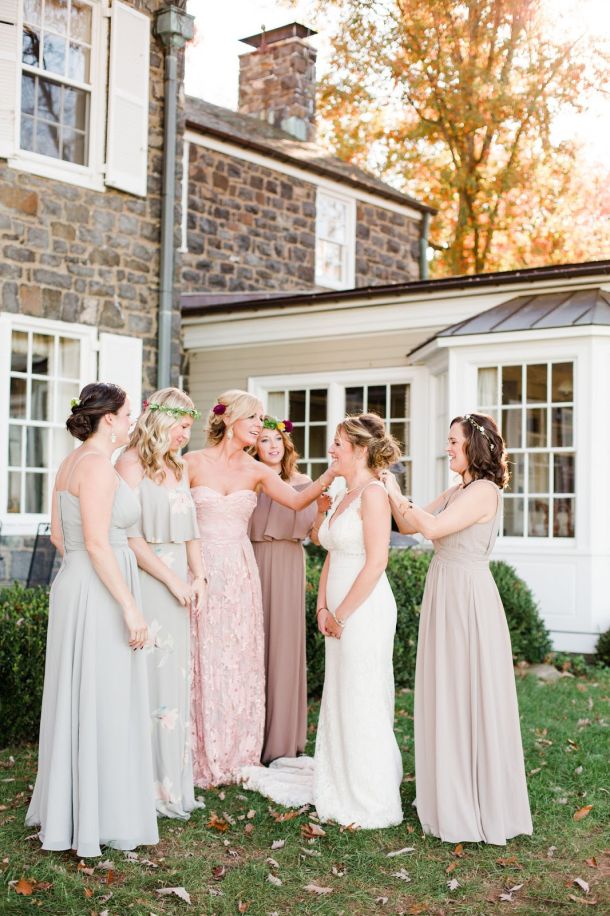Unless your bridesmaids happen to be exactly the same age, height and body build, it is difficult to find a universally attractive dress to flatter all of them. If you feel strongly that all bridesmaids need to wear the same exact dress, stylists generally agree that an A-line silhouette that starts narrow at the waist and flares towards the hem is the most universally flattering. They are the best compromise, but must be fitted properly to make sure they do not pull at the hips. Floor-length A-line dresses are generally the easiest to make look good on all figure types.
That said, the days when bridesmaids had to wear the same exact gowns have passed. It is now very common to see a bridal party wearing the same or similar color dresses in several different styles.
Which gowns best fit each body type?
Petite bridesmaids can wear many styles including A-line, sheaths, empire waists and trumpets as long as they are structured. Stylists recommend petite bridesmaids wear open, sexier necklines that are strapless or off the shoulder. If they wear sleeves, they should be ¾ length to make the arms appear longer.

Lean and straight figures look great in almost everything. Mermaid dresses are not forgiving on other bodies, but were made for the straight, lean ones. High necklines look excellent with full a-line skirts, and this is the one body type that generally looks amazing in crop tops with many different kinds of skirts. Most sleeve types and necklines work for lean and straight bodies, primarily dependent on height.
Plus size and busty bridesmaids need to choose gowns that accentuate the areas where they want attention and de-emphasize those that they’d rather conceal. Structured fabrics that don’t cling are best, but can have an embroidered or sheer overlay. As previously mentioned the A-line dress is best for plus-size figures with an empire waist as the next best option.
THE FABRICS
Most bridesmaid dresses are primarily made of one of three fabrics: taffeta, chiffon or satin. Taffeta is the most structured but also the warmest to wear, so it is commonly chosen for cooler weather weddings. Airy chiffon, like all three fabrics, can be worn any time of year, but is cooler and thus popular in late spring and summer. Satin is classic and associated with formality. It can be extremely unforgiving in photos, though, so it should only be worn on any figure when properly fitted.
Other fabrics that contribute texture and style to bridesmaid dresses include organza and tulle. Embroidery, lace and beading can enhance (and sometimes hide!) figure features. And of course, design elements like rushing, pleats and folds can work to some bridesmaids’ advantage.

Christa Rae Photography
THE COLOR
The most universally flattering colors are monochromatic and deeply saturated – navy blue, burgundy, black and coral for example. In the lighter shades, mint green and blush tones like champagne, ivory and pale mauve look great on most folks. You can just pick one that you love and allow your attendants to choose a shade of that color that works best for them. Six bridesmaids in tones that complement your palette and styles of gowns that make them feel beautiful and confident could be your wedding day dreams come true.
Katarina Štimac, fashion blog – LaKatwalk